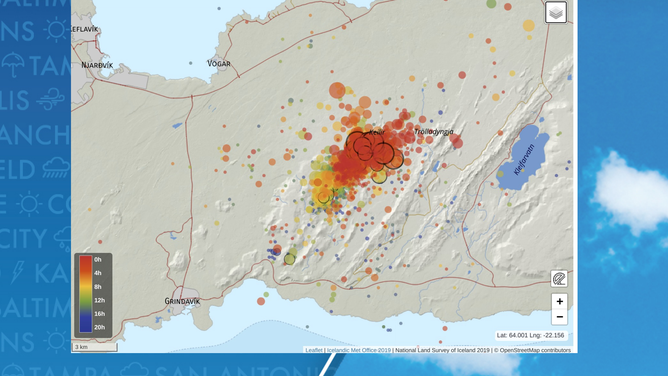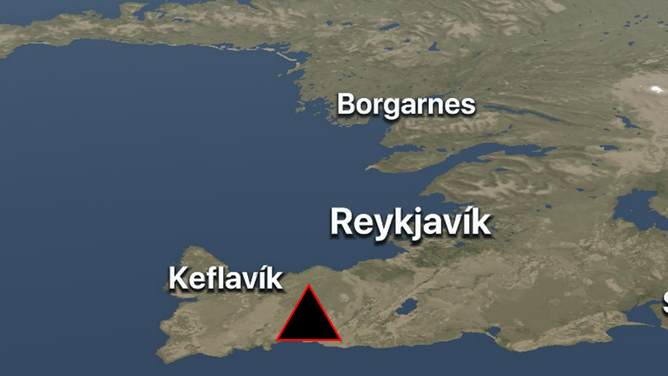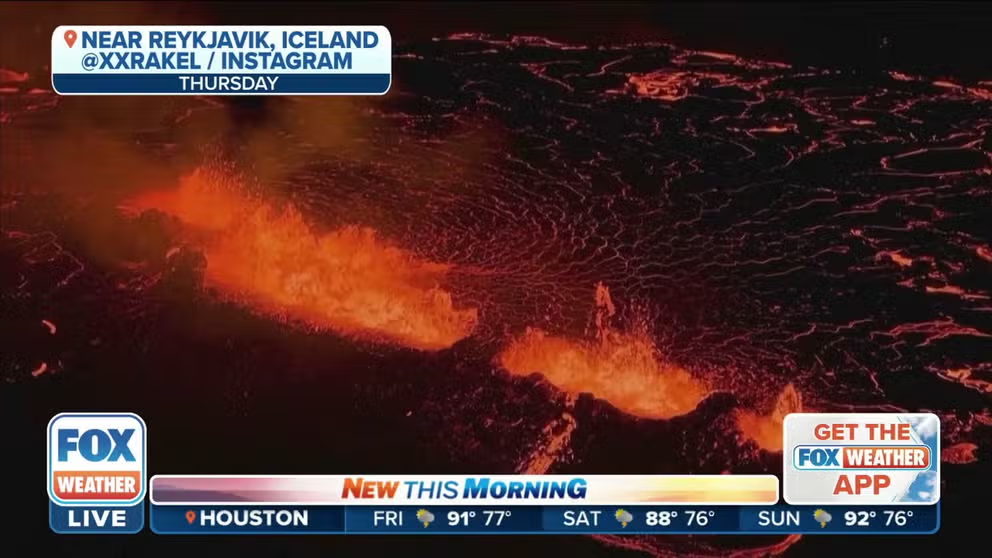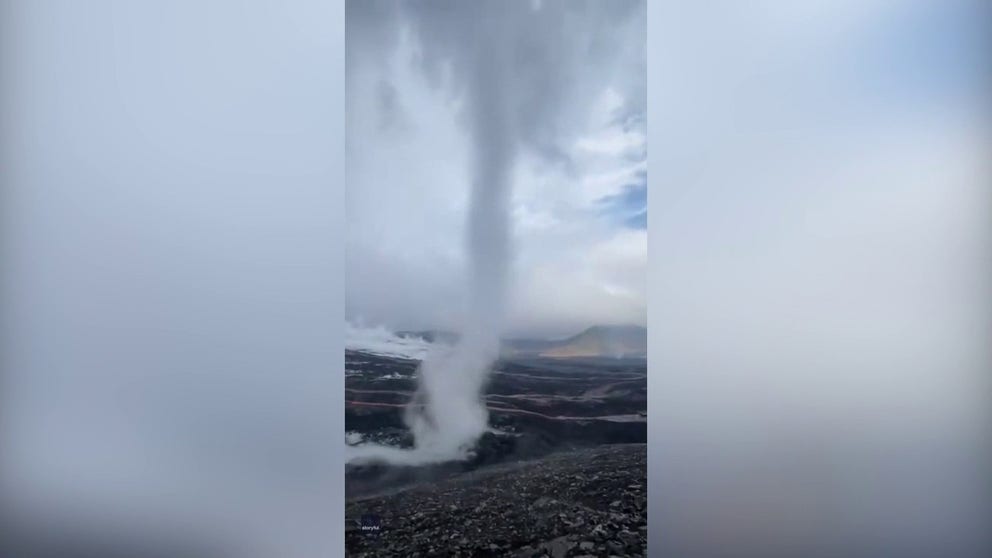4,700 earthquakes in 72 hours could signal impending eruption of Icelandic volcano
The Fagradalsfjall volcano was considered to be dormant for over 2,000 years until recent eruptions in 2021 and 2022. Fagradalsfjall is only about a 20-mile drive from the country’s main airport of Keflavík.
Iceland's Fagradalsfjall volcano erupts spewing lava
Iceland’s Fagradalsfjall volcano put on an impressive display on Thursday, August 4, spewing boiling lava from a fissure on the side of the mountain close to the capital, Reykjavik.
REYKJAVIK, Iceland – Residents on the Nordic island nation of Iceland are closely watching a volcano that has been the focal point of thousands of earthquakes over the last few days, which could signal an upcoming eruption.
The Icelandic Meteorological Office reports more than 4,700 earthquakes have occurred around Mount Fagradalsfjall – an active volcano about an hour’s drive from the capital city of Reykjavík.
Most earthquakes have been minor, but government agencies warn that seismic activity has increased the risk of landslides.
Alert statuses around the volcano have been raised in anticipation of increased activity and volcanic ash.
The volcano produced a series of eruption events in 2021 and 2022 but has been mostly quiet for nearly a year.

Earthquakes around the Fagradalsfjall volcano
(FOX Weather)
"Based on the present assessment, two outcomes are possible. The seismicity could decrease progressively without magma reaching the surface. Alternatively, the seismicity could still decrease when the magma stops moving laterally but begins to move upward towards the surface (as observed prior to the last two eruptions here). This would likely result in an eruption close to where seismicity is currently concentrated. However, magma reaching the surface anywhere in the region between Fagradalsfjall and Keilir cannot be excluded. Of the two possible outcomes, a volcanic eruption occurring within days or weeks is considered more likely," meteorologists stated during their latest volcanic update.
WATCH A VOLCANO ERUPT OUTSIDE OF ICELAND’S CAPITAL
The volcano is located far enough away from many of the country’s 375,000 residents that impacts are usually minor during times of eruptions.
Fagradalsfjall is only about a 20-mile drive from the country’s main airport of Keflavík, which has previously triggered concerns in the aviation community.

Fagradalsfjall is about an hour's drive outside the capital city of Reykjavik.
(FOX Weather)
Planes are highly susceptible to ash, and the U.S. Geological Survey reports there have been at least 79 cases worldwide of volcanic material damaging aircraft since the 1950s.
Forecasters said in addition to an increase in seismic activity, satellite observations indicate changes in terrain are occurring on the southwestern tip of the island.
The island nation is not a stranger to volcanic activity due to its location on the Eurasian and North American tectonic plates.
Iceland has the most volcanoes of any region in Europe, with around 130 active and inactive volcanic mountains.
Watch: Funnel swirls top Icelandic volcano
Watch as an Icelandic version of a

